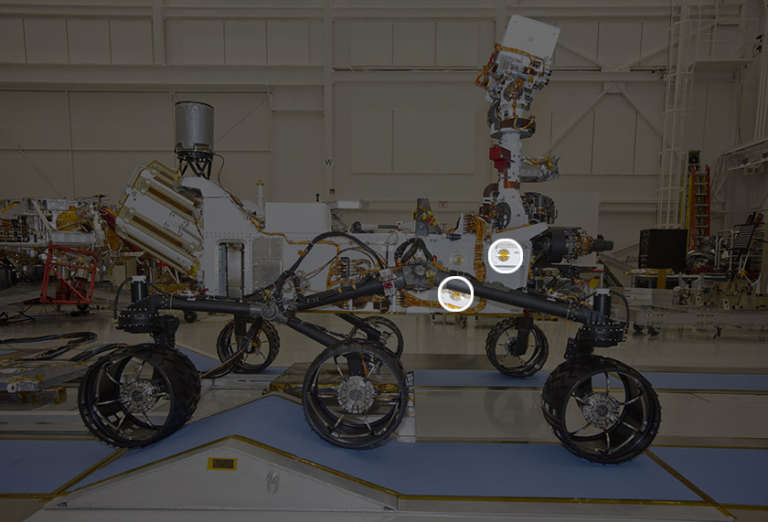Casey Dreier • Apr 08, 2013
More Evidence for a Habitable Mars from EGU 2013
NASA's Curiosity rover has acquired further evidence that Mars's atmosphere was once dense enough to support liquid water on the surface.
According to Sushil Atreya, co-investigator of the astoundingly complicated Sample Analysis at Mars (SAM) instrument, Mars has lost a "tremendous amount" of its atmosphere – around 85% to 95% – over the course of billions of years. The original atmosphere would have been warmer and heavier, providing conditions suitable to sustaining liquid water on the surface and an environment habitable to potential life.

Curiosity measured the ratio of two isotopes of Argon, Ar36 and Ar38, and found that a significant amount of Ar36 was missing from Mars's atmosphere. Since Argon is a non-reactive noble gas, a lack of Ar36 implies that it was caught up in a larger process of atmospheric loss. Ar38, a heavier element, is held more tightly to the surface of Mars due to gravity, and is lost at a much lower rate.
The exact cause of atmospheric loss on Mars is not fully understood. NASA has hope that MAVEN, a new Mars spacecraft that will launch in November of this year, will shed light on this process.
This announcement came today at the European Geosciences Union 2013 general assembly in Vienna, Austria.
Other stray observations from the Curiosity press conference:
The Computer Problem
Curiosity is now fully recovered from its glitch and is now working off of its B-side computer. The A-side now serves as a backup. Engineers still do not fully understand why the A-side's memory became corrupted, sending the rover into safemode and stopping all scientific observations, but they have isolated the offending area of memory and are confident that the remaining space on the A-computer is enough to serve as a proper backup.
ChemCam Has Discovered...Dust
ChemCam has zapped its laser over forty-thousand times on the surface of Mars on over fourteen-hundred different targets. A notable, though not particularly profound, discovery is that Martian dust is ubiquitous over all surfaces. "The first shot is always dust," said Sylvestre Maurice, deputy Principle Investigator of ChemCam, "even the calibration target had dust on the first shot." This includes even the newly-drilled holes into the rock John Klein: Martian dust quickly coated the fresh surface.
Curiosity's Personality is that of a Laboratory
So stated by the Principle Scientist, John Grotzinger, explaining Curiosity's methodical, plodding pace since landing, and why we won't be arriving at Mt. Sharp any time son.
Let’s Go Beyond The Horizon
Every success in space exploration is the result of the community of space enthusiasts, like you, who believe it is important. You can help usher in the next great era of space exploration with your gift today.
Donate Today

 Explore Worlds
Explore Worlds Find Life
Find Life Defend Earth
Defend Earth

